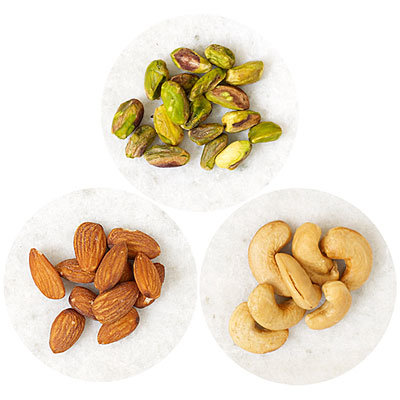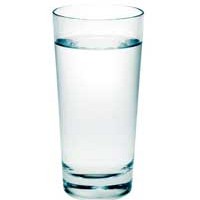Learn How To Count Your Calories With The Low Calorie Diet Plan
If it has been sometime since you were last able to fit into that figure hugging dress, it’s time to drop some weight effectively? Diets that are endorsing very quick results without any work on your part are a cause of concern. As a certified dietitian, my professional instinct is to gun them down as non-scientific gibberish. What I personally would recommend if you are looking to lose weight the healthy way is the low calorie diet plan or as some would call it a calorie-controlled diet. There has been considerable analysis done on this diet with regards to its usefulness.
To understand what this diet is about, you need to know about the basic terminology. We need to compute the amount of energy that the food we consume provides and this is measured in calories (kcal). So what’s the big deal about all this calories talk?? The problem with most people is they are eating way more calories than they actually need.
Calorie in > Calorie out = Weight gain
Now that you understand what causes us to gain weight, follow me though a 3-step plan to help you embark on a low calorie diet plan effectively.
Step 1: Find out the number of calories you need daily
The amount of calories your body needs is a combination of your basic metabolic rate (BMR) and activity level. Take note that the BMR for a man and woman is determined differently.
Women:
BMR = 655 + (9.6 X weight in kilos) + (1.8 X height in cm) – (4.7 X age in years)
Men:
BMR = 66 + (13.7 X weight in kilos) + (5 X height in cm) – (6.8 X age in years)
To find out what your daily calorie requirement is, use the following formulas:
Sedentary (Your only exercise is typing on the keyboard)
(BMR x 20 percent) + BMR
Lightly active (You exercise 1-3 times a week)
(BMR x 30 percent) + BMR
Moderately active (You exercise 3-5 times a week)
(BMR x 40 percent) + BMR
Very active (You exercise intensely on a daily basis)
(BMR x 50 percent) + BMR
Extra active (You do hard labor or are in athletic training)
(BMR x 60 percent) + BMR
Let’s not kid ourselves. If you want this diet to work you have to use the formula based on the ACCURATE activity level. Let me show you how it works. The projected calorie requirement for a 47 year old sedentary woman who is 68kg and 163cm tall will be:
BMR = 655 + (9.6 X 68) + (1.8 X 163) – (4.7 X 47) = 1380 kcal
Total daily calorie requirement = (1380 x 0.2) + 1380 = 1656 kcal
A regular western diet contains about 3000-3500kcal and that is much more than what an average female needs to have daily. It comes as no surprise as to why the obesity rate is increasing at such an alarming rate.
Step 2: Decide on how much you need to cut out from your diet, create a calorie deficit
If you consume fewer calories than needed, you will lose weight. In general, if you are eating 500kcal calories less than what you need daily, you are creating a 3500 kcal deficit per week.
A female that is consuming 1150kcal daily as opposed to her required 1656kcal will lose about 1 pound after a week . This is in theory. Try to keep your daily calorie intake to more than 1200kcal or your body will respond by holding on to the fat cells more stubbornly.
3500kcal deficit = 1 pound of weight loss
You will need to cut off 70000kcal from your diet if you plan to lose 20 pounds. Remember, slow and steady wins the race.
You should strive to lose 1-3 pounds a week. Anything more than a weight loss of 1-3 pounds a week is too drastic
Step 3: Note down whatever you eat
You will get better success from your diet if you note down what you eat. You will find that you are actually consuming a lot more than you imagined (assuming you do not cheat).
Write down all the food and drinks you consume and the estimated amount (in household measurements e.g. cups or tablespoons etc) over a period of 3 days. Include as much details about what you eat. .
There are a couple of tools you can find on the internet to help calculate the calories you are getting from your meals.
From your food journal you will be able to have a clearer picture of your eating habits. You will also be able to identify what you can easily eliminate from your diet to create the calorie deficit I was explaining about above.
As with all dietitians, I love to write meal plans. Here is an example of a nutritionally balancedlow-calorie meal plan.
Breakfast:
Half a wholegrain bagel with a thin spread of light cream cheese (300kcal)
1 glass of low fat milk (90kcal)
Mid-morning snack:
1 cup of Low-fat yoghurt (130kcal)
Lunch:
Wholegrain sandwich bread, with a spread of mustard, salad veggies and lean meat (chicken/beef) (350kcal)
1 serving Minestrone soup (150 kcal)
Afternoon snack:
1 serving of fresh fruit (70 kcal)
Dinner:
Half cup of pasta with tomato sauce + 1 palm size grilled meat/fish or chicken OR half cup of lean mince (400kcal)
Side salad with fat-free dressing (70 kcal)
1 serving of fresh fruit (70 kcal)
Total Calories: 1630 kcal
Take note that this is just an example and not a meal plan you have to abide by 24/7. Once you are familiar with the calorie density of most of the food that you consume, it will be easier for you to know which or what food to exclude from your diet.
Here are a number of tips which you can employ to create a calorie deficit
1) Replace your regular soda with the diet/light version
2) Use fat free salad dressings
3) Drink real fruit juice instead of processed ones
4) Use healthier cooking oils like sunflower or olive oil for cooking
5) Cut away the fats and skin when buying meat
6) Eat less during each meal time. About 1/4 less
7) Consume less fried stuff
8) Use low fat dairy products
9) Reduce your alcohol intake
In order for the low calorie diet plan to work, consistency is key. Celebrate small successes in your weight loss by giving yourself a little treat of your favorite dessert. If you happened to consume more than you need for the day, don’t lose sleep over it. It isn’t what you consume in a day but the cumulative efforts over a period of time that really matters in the battle against the bulges.
Kelly Kims is a trained dietitian and nutritionist with experience in major health institutions. She specializes in nutritional therapy for weight loss, high cholesterol and healthy meal planning to cater to different dietary needs such as vegetarianism. As a fitness fanatic herself, she is well versed in sports nutrition and has also worked with sportsman and athletes to improve their sports performance through good nutrition. Kelly Kims co-owns a site on easy to follow diet plans with her partner and writes regularly about healthy eating and diet.
-
Injectable HCG is Not the Only Route for the HCG Diet
For many, many years, injectable HCG was the only product available fo
-
Fat Burning Furnace - Fast Results Best Exercises Lose Weight!
Fat Burning Furnace - Fast Results Best Exercises Lose Weight! How to
-
Fat Burning Furnace - Rapid Fat Loss Diets Reveals Secrets for The First Time!
Learn How to Lose 26 Pounds in 7 Weeks! Rapid Fat Loss Diets Reveals S
-
2014 Safe Diet Pills for Women
-
How to Get Around HCG Diet Dangers
While there may be HCG diet dangers that a dieter should be aware of,
-
Herbal Fat Burner Pills Review By Ayurveda Expert
InstaSlim capsules, herbal fat burner pills have been created to tack
- DON'T MISS
- Diet Plans For Gastritis
- Green Tea Weight Loss - Is Green Tea Good For Weight Loss?
- The Difference Between Weight Loss Summer Camp and Obese Camp
- Diabetes Diet: A Step by Step Guide
- P90X is aspect boilerplate the accession referred to as Beachfront Physique.
- How to Lose Love Handles For Women - The Longer You Wait, the Harder it Gets!
- Bananas: Ultimate Hunger Buster
- Whole Foods Diet
- Read About The Latest Shakeology Diet Regime Trend
- Grow Taller 4 Idiots Review - How To Grow Taller Secrets Revealed




